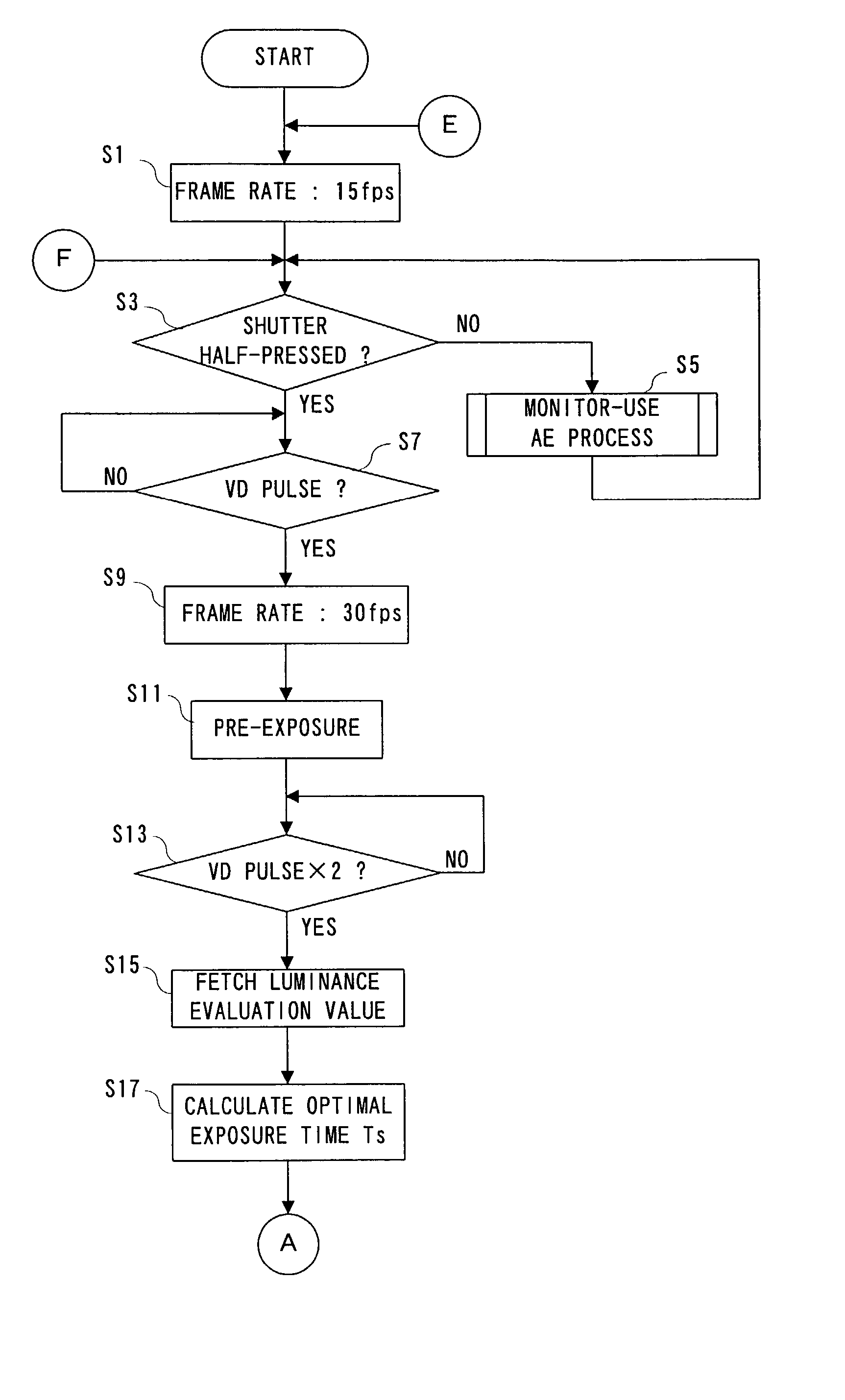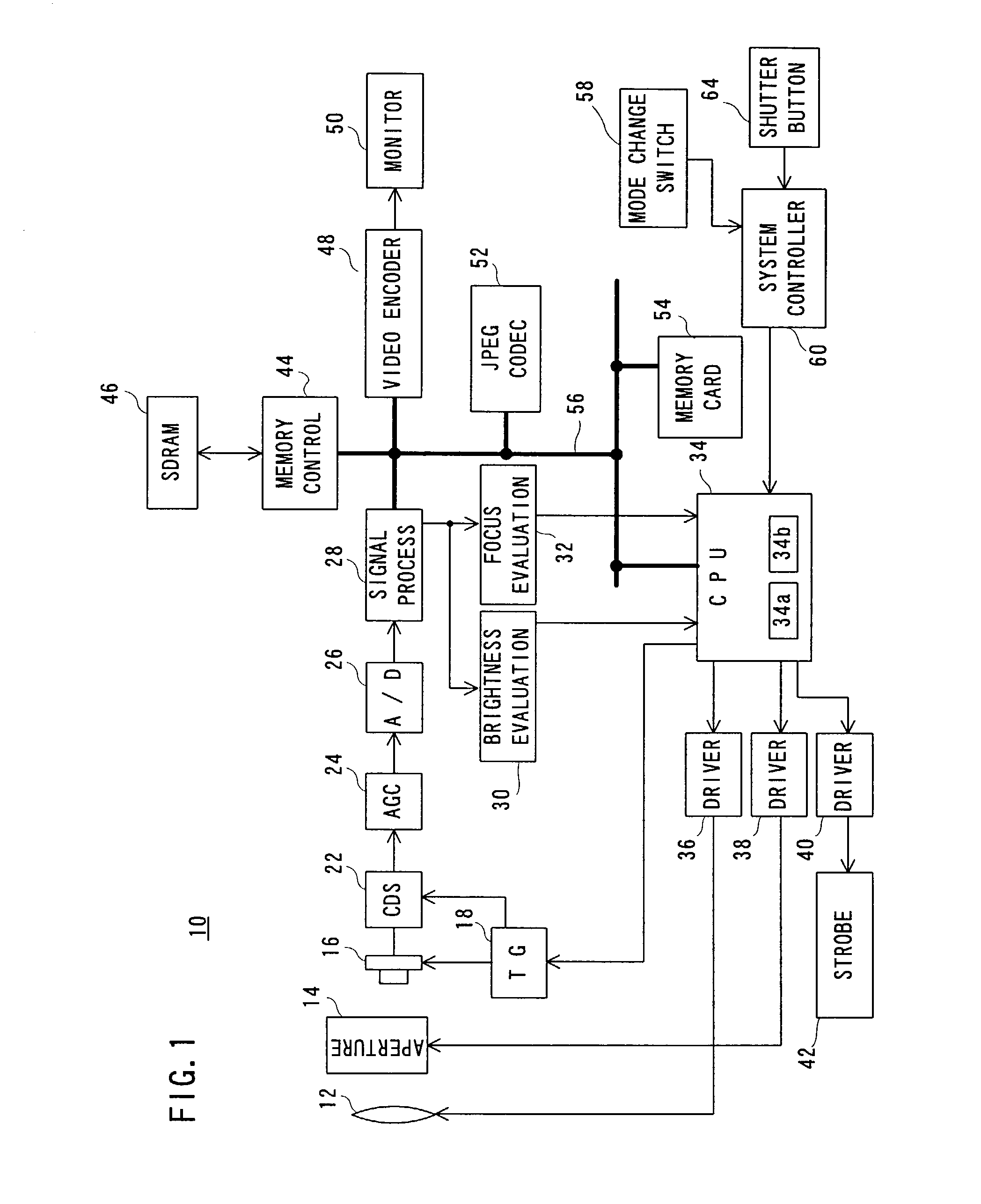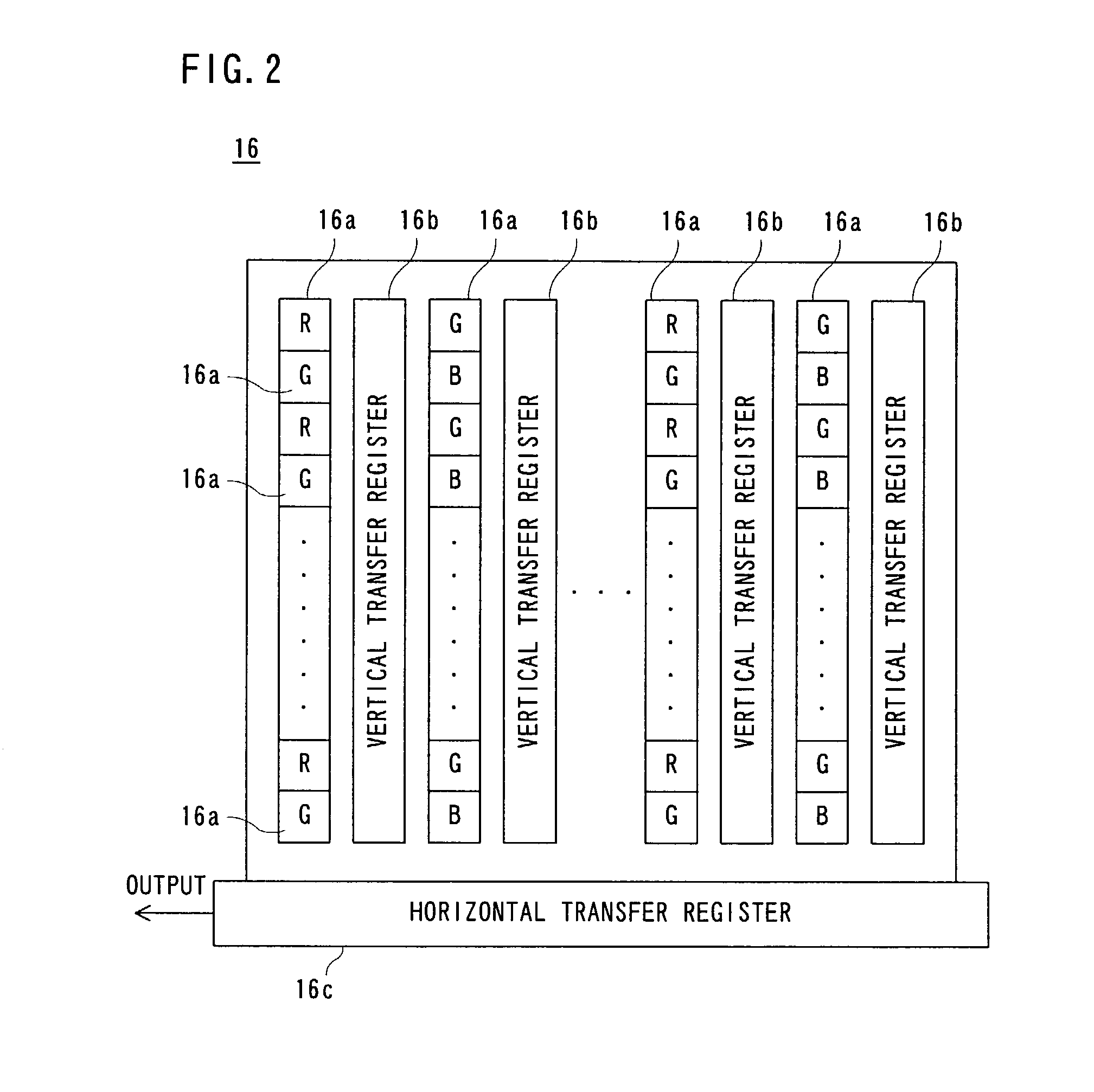Digital camera
- Summary
- Abstract
- Description
- Claims
- Application Information
AI Technical Summary
Benefits of technology
Problems solved by technology
Method used
Image
Examples
Embodiment Construction
[0032] Referring to FIG. 1, a digital camera 10 of this embodiment includes a focus lens 12 and an aperture unit 14. An object image (optical image of the object) is irradiated into a CCD imager 16 of an interline transfer scheme through these members. It is noted that an effective area of the CCD imager 16 has a resolution of 640 pixels.times.480 lines (VGA) and a total number of pixels including an optical black area is 680 pixels.times.533 lines. Furthermore, a light-receiving surface of the CCD imager 16 is covered with a color filter (not shown) of a primary color Bayer array, for example.
[0033] As shown in FIG. 2, the CCD imager 16 includes a plurality of light-receiving elements 16a corresponding to each of pixels, a plurality of vertical transfer registers 16b for transferring in a vertical direction an electric charge generated by photoelectronic conversion and accumulated in each light-receiving element 16a, and a horizontal register 16c arranged at an end of the vertical ...
PUM
 Login to View More
Login to View More Abstract
Description
Claims
Application Information
 Login to View More
Login to View More - R&D
- Intellectual Property
- Life Sciences
- Materials
- Tech Scout
- Unparalleled Data Quality
- Higher Quality Content
- 60% Fewer Hallucinations
Browse by: Latest US Patents, China's latest patents, Technical Efficacy Thesaurus, Application Domain, Technology Topic, Popular Technical Reports.
© 2025 PatSnap. All rights reserved.Legal|Privacy policy|Modern Slavery Act Transparency Statement|Sitemap|About US| Contact US: help@patsnap.com



